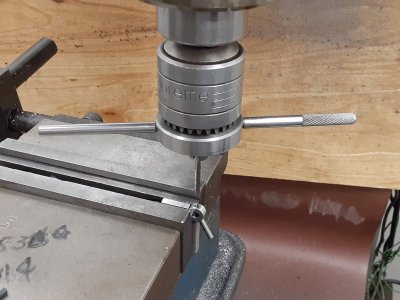- Joined
- Jul 28, 2017
- Messages
- 2,396
I have a project where I need to drill and tap some holes for 2mm screws. These will be the smallest I have ever done. Fortunately the screw holes aren't going to be very deep, about 5mm. I can thru-drill so the chips can drop out, and the material is 6061 aluminum. I know the threads won't be the strongest in the world but the screws just have to hold an Igaging DRO sensor board in place (more on that part of the project in a later post).
The holes will be drilled/tapped on my mill and I have a spring-loaded gadget I can install in the drill chuck to help center the tap while I'm cutting the threads. I have a container of tap magic to use for this and will definitely use it, you betcha!
What I want to know is what sorts of problems I may encounter while doing this.
The holes will be drilled/tapped on my mill and I have a spring-loaded gadget I can install in the drill chuck to help center the tap while I'm cutting the threads. I have a container of tap magic to use for this and will definitely use it, you betcha!
What I want to know is what sorts of problems I may encounter while doing this.


